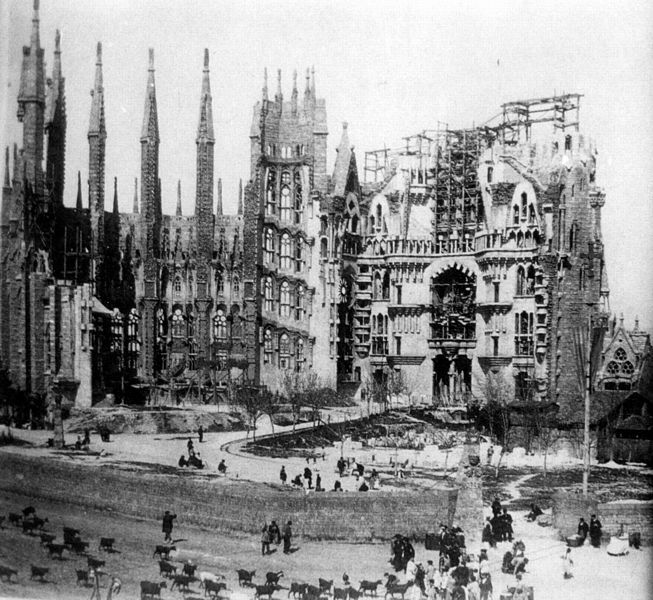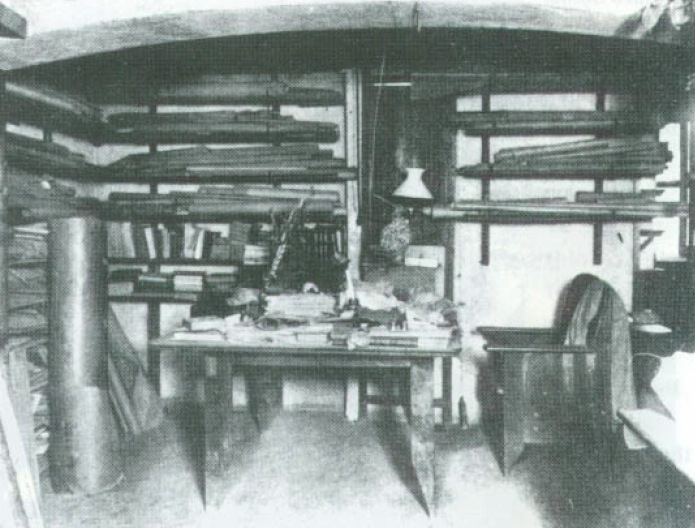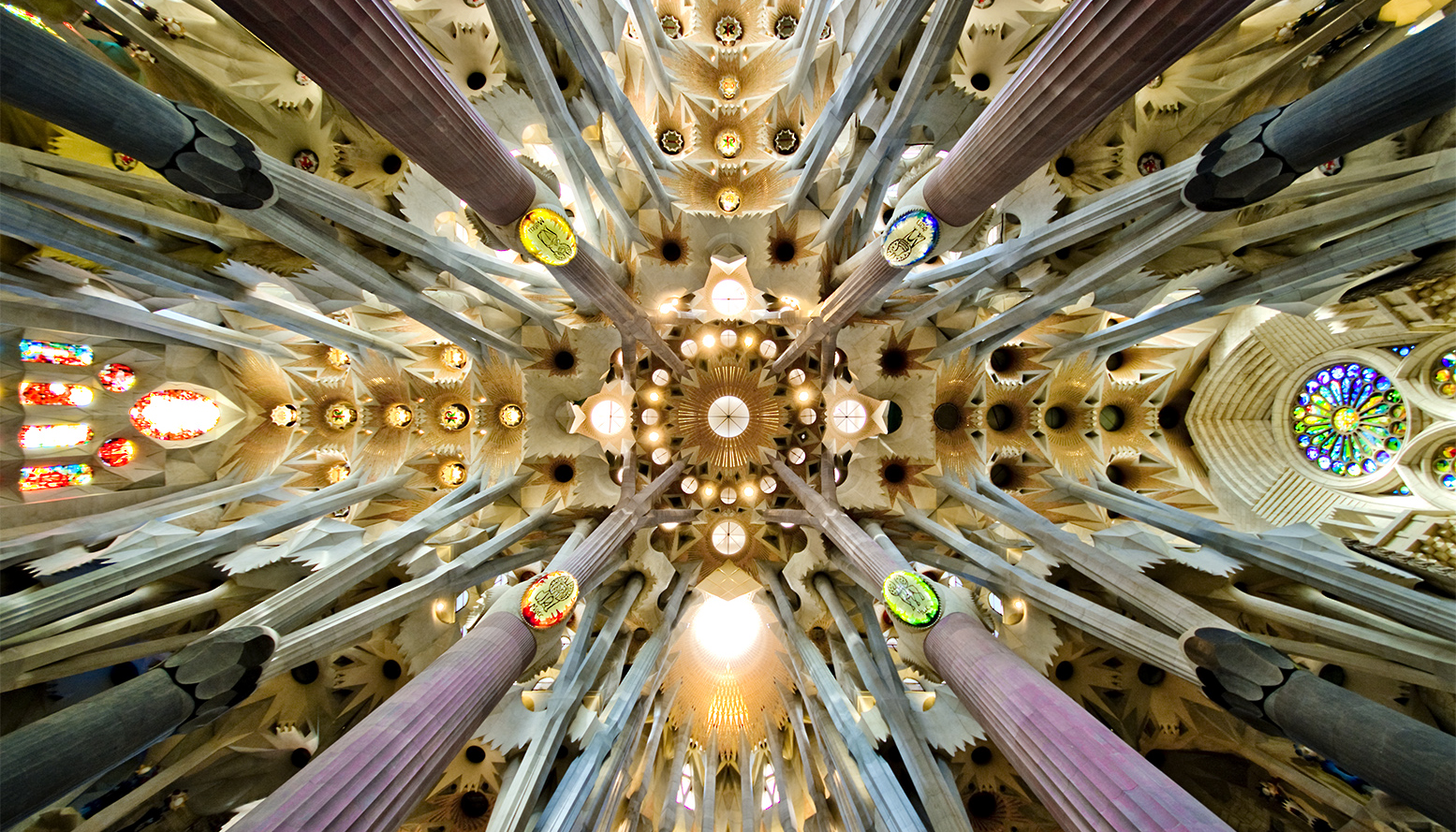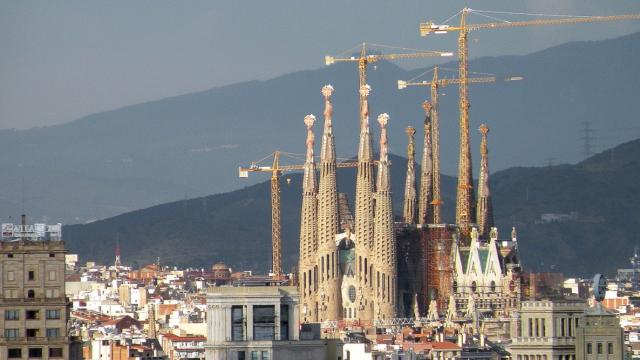Visiting the dripping sand castle basilica that is the Sagrada Familia in Barcelona could definitely be described as one of the most awe-inducing moments of my life. A spiritual experience? Perhaps. But is it a miracle? That’s what a group of believers are trying to prove in their campaign to make its architect, Antoni Gaudi, a saint.
If named, Gaudi would, in fact, be the first architect to achieve sainthood. This would place him in a very exclusive club of individuals who have been named saints without holding a formal role in the church (like popes and bishops). But why Gaudi over someone like, say Michelangelo or Leonardo da Vinci, who certainly contributed a great deal of their art and design talents to the church? Or any of the hundreds of other Roman Catholic artists and architects?
“Gaudi devoted his life to God,” Gabriela González-Cremona told me, a lawyer who is working with the Association of the Beatification of Antoni Gaudi. “He honored God by means of prayers and his masterpieces. Both his life and his work give testimony and intensify the faith to whoever contemplates them.”

The Sagrada Familia, under construction in 1915. It might be finished by 2026
The proof, the association claims, is evident in his devotion to his architecture. Gaudi completed many influential buildings throughout Spain, mostly in the city of Barcelona. But it’s his work on one particular structure, which came to consume his whole life, that’s of particular interest to the church. The genre-bending Sagrada Familia is certainly one of the most famous buildings in the world — and equally famous for being perpetually under construction since 1882, with no completion in sight.
Nicknamed “God’s Architect” long before the beatification campaign, Gaudi was, by all accounts, an extremely spiritual person. Born in 1852, he was deeply inspired by nature as he began working in his father’s metal shop. He never married, which some offer as evidence that he chose to live his life like a member of the cloth. At the age of 31 he began working on the Sagrada Familia, which slowly took over his entire professional career. In fact, for the last 10 years of his life he swore off all other commissions, eventually relinquishing his possessions and moving into his tiny workshop at the basilica. After being struck by a streetcar at the age of 73, he died a few weeks later, in 1926.
The process of beatifying Antonio Gaudi was initiated in 1992, as a group of religious figures, architects, canonical lawyers, and other followers began the campaign, embarking upon what is essentially a mountain of paperwork. In 1998, local bishops gave their approval to move the campaign forward. In 2003, the process was officially initiated at the Vatican. The campaign has now created a publication which outlines Gaudi’s life and major works, and documents the entire beatification process up until this point.

Gaudi’s no-frills workshop in the Sagrada Familia, which eventually served as his home as well, is evidence that he lived humbly before God
Like you’d expect, sainthood, or canonization, doesn’t come easy. In the Catholic Church, it’s actually a three-step process, with a person named first as Venerable, then Blessed, then full-on Saint. The level of blessed (beatification) requires evidence of one miracle. To achieve sainthood (canonization), the church needs proof that the person in question has performed
two miracles. (Martyrs — those who gave their lives for the church — only need one miracle total, which makes total sense.)
The miracle-proving is arduous. “It’s not the hardest part but the most laborious of the process, because the Vatican is strict and requires the deep study of experts who can demonstrate that the miracle has been made without a scientific explanation,” says González-Cremona. Essentially there is a Vatican panel of lawyers and medical experts whose jobs are to examine the miracles and determine that there is no possible scientific basis for how those miracles could have been performed. As you might guess, this has become a bit more difficult lately. Mother Teresa was beatified in 2003 but her second miracle has yet to be confirmed, so she’s no saint (yet). Plus, the church has been criticised in recent years for relying too much on medical miracles — lots and lots of evaporating kidney stones in there — and not enough on miracles of the contemporary age.
When it comes to Gaudi, the association has been busy collecting hundreds of testimonies which could be offered up to the Vatican for miracle consideration. According to the documentation provided to me, these are stories from people who have prayed to Gaudi to help them with problems ranging from unemployment, to creative inspiration, to health issues, and have seen results.
Consider this story from P. José Lino Yáñez, a tourist from Santiago, who wrote this testimony in 2005:
“A year ago, Barcelona was shocked by a train accident on its underground line. I had been taking part in a mass in the crypt and praying before Gaudi’s tomb… I was concentrating on reading the pamphlet about Gaudi when the aforementioned crash took place. I was thrown out of my seat and found myself lying in the aisle… This accident could have had serious consequences for me (I am 69 years old). I wasn’t even left with a bruise. A year later, I would like to thank the Catalan Servant of God for his protection.”
The process of engaging with Gaudi’s work has even converted some architects and artists to Catholicism, according to the documentation. The Japanese architect Kenji Imai, reportedly converted to Catholicism upon visiting the Sagrada Familia. A sculptor, Etsuro Sotoo, moved to Barcelona to work on the basilica and converted from Shintoism to Catholicism — a very compelling argument for the power of his faith.
As the story of Gaudi’s beatification got passed around the architectural blogs, a wisecrack that most writers couldn’t help making was about the famously incomplete Sagrada Familia, which might be finished in time for the centenary of Gaudi’s death, in 2026. If Gaudi could perform miracles, they asked, why is it still not done?
The Sagrada Familia’s unfinished status might actually be more proof that Gaudi was guided by a celestial hand. One practical reason the Sagrada Familia is not complete is because it is considered an expiatory cathedral, González-Cremona tells me. It must be completed with donations from the faithful, not government funding, something that is widely misunderstood by the general public.
But comments made by Gaudi himself, when he was still alive, seem to prove that he was operating on more of a divine timetable. “When Gaudi was asked about when the construction of the expiatory temple of the Sagrada Familia would be finished, he would respond: ‘My client is not in a rush,’” says José Manuel Almuzara Pérez, an architect and president of the association.
Although there are reports from local media that Gaudi’s beatification may occur within the next year, Almuzara Pérez prefers to take a similar stance as God’s Architect himself when it comes to predicting the achievement of Gaudi’s sainthood. “In the same manner, only God knows when the beatification process of Antoni Gaudi will conclude,” he says. “Like Gaudi, we want to work without rushing, studying deeply the biographic content, the testimonies, the writings. We do not propose a set date. Who can calculate and set a date before a miracle?”

Is this evidence of divine intervention? Looking up inside the Sagrada Familia, photo by SBA73
Hypothetically, I keep trying to imagine a group of Americans making the same case for Frank Lloyd Wright (he was Unitarian, but stay with me here). He didn’t have a Sagrada Familia, but he has buildings which have required constant and diligent upkeep long after his death. And, of course, a gas station which was completed 87 years after he designed it. Wright definitely had followers and even what might be considered disciples, including those who learned his way of working and are passing it along to the next generation at his school, Taliesin West. When you visit the plot of Arizona desert where Wright lived and practiced, you can feel his presence quite distinctly. It would not be out of the realm of possibility for some people to pray to him and believe that he had helped to answer their prayers.
The fact that Gaudi’s method of working — perhaps you would call it devotion — has inspired so many to continue in his footsteps, in service of the church, is definitely notable. Is there any architect working today who has spent 40 years on the same project? Does contemporary architecture culture even permit that kind of thing? There are plenty of famous unfinished buildings around the world — many of them are churches and abbeys, in fact — but when you look at the Sagrada Familia, it does seem to be a special exception. Gaudi’s idea has not only captivated the world, it has remained an active construction site for over 100 years. That’s no small feat, and it’s a testament to his talent. Maybe that’s the miracle.
Still, I have to admit, when I’m standing before his life’s work, watching the cranes hovering above the impossibly elongated and intricately decorated spires which belong to no clear architectural era and defy all categorization, it does feels like there are some greater forces at play here, helping to realise Gaudi’s impossible vision.
The Sagrata Familia in 2009, photo by Tassilirosmar
